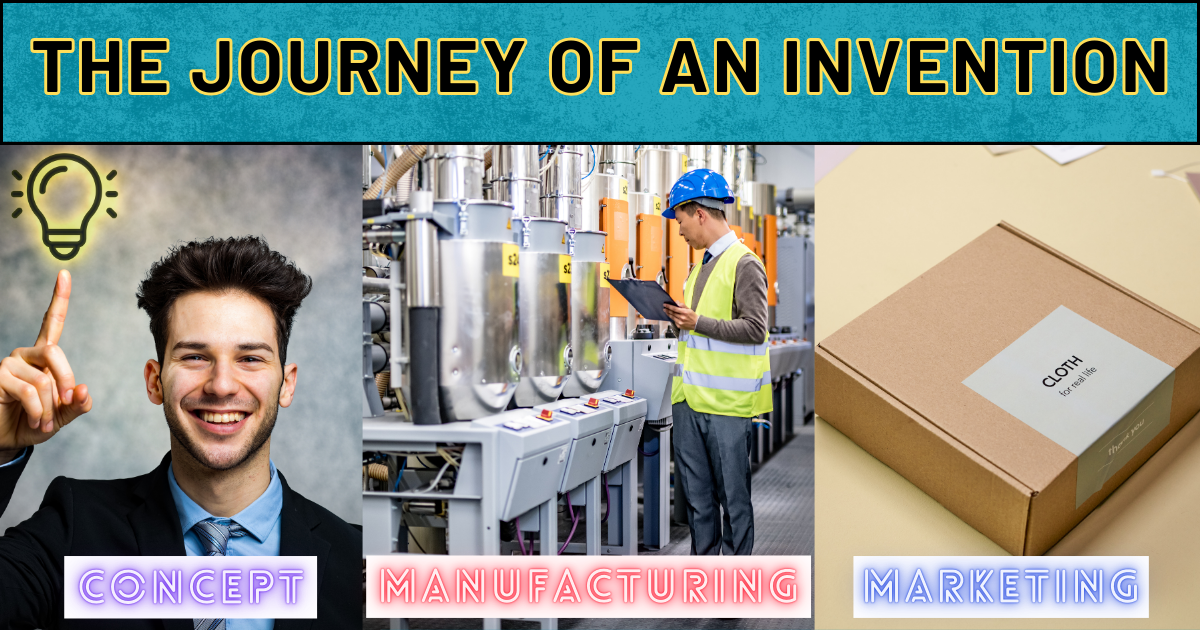The Journey of an Invention: From Concept to Global Impact. The journey of an invention is not that simple. It starts from just an idea, which has many flaws, and ends up being either a failure or a significant invention. The concept seems simple, but in reality, it is one of the most difficult parts. To know more about the topic “The Journey of an Invention: From Concept to Global Impact,” read the complete article.
The Journey of an Invention: From Concept to Global Impact
The birth of an invention starts from a concept. The desire to convert the concept into an invention can come from different sources – a personal requirement, an urge to address an existing problem, or a curiosity to explore new possibilities. Making an invention requires a lot of work, time, knowledge, dedication, and money. There are many resources in the present time that can help with the development of an invention.

To understand the journey of an invention from concept to global impact, continue reading the article:
The Concept
The first and most important step to make an invention is to come up with an idea. The concept must be clear in the mind of the inventor. It is not compulsory that the idea or concept must be a hundred percent perfect. It can have flaws but it must have potential. During this phase, it is important to consider the feasibility, marketability, and practicality of the idea.
Research and Analysis
After the concept is clear in your mind, start with researching the invention. This mainly includes gathering information about the idea, such as its history and potential competitors. It is also important to analyze existing patents and inventions to ensure your idea is novel and doesn’t infringe on any existing intellectual property rights. Don’t forget to gather feedback from potential users to determine if your idea is worth working on.
Conceptualization and Design
After researching and analyzing the idea, start conceptualizing it with the help of designs. Computer-Aided Design (CAD) software can be used to create virtual prototypes, enabling you to visualize and refine your invention before moving forward.
Prototype Development
Prototyping is a crucial step in refining an invention. A new invention remains theoretical until you bring it to life. Prototyping is the bridge between ideas and reality. It allows you to test your invention’s feasibility, refine your design, and examine its quality.
Here is some advice for creating a prototype:
- Pay attention to the primary features. The prototype doesn’t need to be polished yet.
- Use available tools or materials. Alternatively, seek help from a prototyping lab if needed.
- Be ready to make several versions of your prototype based on feedback and testing.
Testing and Evaluation
Testing and Evaluation play a significant role in the invention creation process. Completely testing your prototype helps detect any technical or usability issues that need to be solved. Gathering feedback from potential users or experts in the field can provide valuable insights and guide further improvements to ensure your invention meets the best standards.
Intellectual Property Protection
Intellectual property protection helps guarantee your invention remains uniquely yours and provides legal recourse against potential infringement. It involves a lot of legal paperwork, technical documentation and communication with patent office examiners.
Manufacture Your Invention
After you are done with the above steps, it’s time to manufacture the product. This phase involves producing your invention on a large scale to meet market demand. Partner with suitable manufacturers that can mass-produce your invention without adversely affecting quality or cost efficiency.
Market and Launch
Once everything is in place, investors must get down to serious marketing as well as commercialization. Develop a marketing strategy that highlights the unique benefits and features of your product. A successful launch involves creating buzz, spreading awareness, and capturing the interest of potential customers.
Financing and Funding
As we all know, marketing, manufacturing, launching, and then improving it in the future—all these steps require a huge amount of money. It is necessary to manage your financing and raising funds. You can either use your own money or you can raise it from a large group via online platforms.
Continuous Improvement and Innovation
After everything is done, do not think of it as the end. But think of it as a new morning. You have to do more research about your product. Make new marketing strategies and gather feedback from users. Improvement and innovation are the key strategies for a long-term business.
